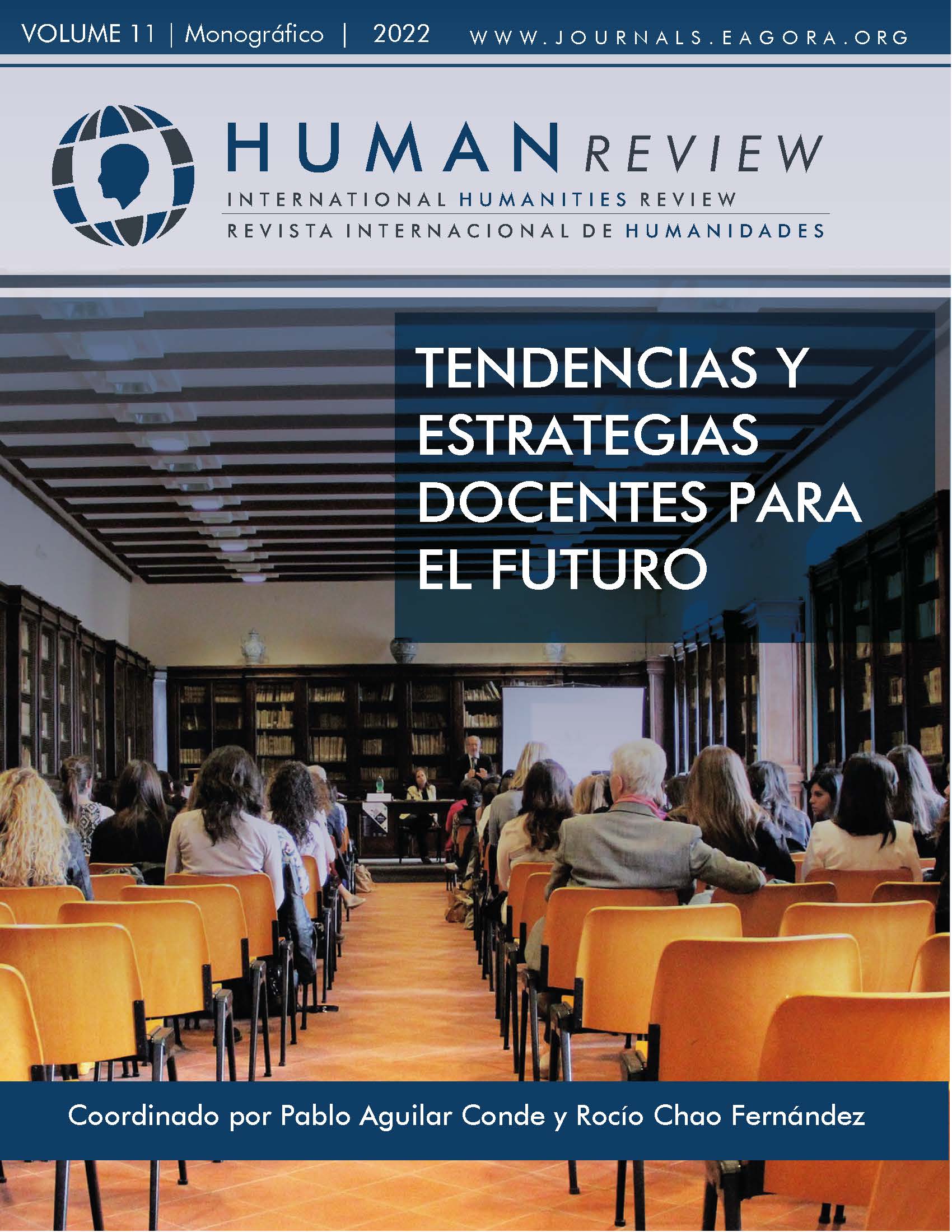Comparing the use of CSs by high and low proficient Spanish learners´ of English: Storytelling and Interview Tasks
DOI:
https://doi.org/10.37467/revhuman.v11.3883Palabras clave:
Communication, Evaluation, Interview, Storytelling, Teaching MethodologyResumen
This research suggests a comparison between two tasks to evaluate oral communication strategies (CSs) through storytelling and interview and to compare the use of CSs between high and low proficient students. The results of the storytelling and oral interview are compared to check if CSs vary with the task and what tasks are better for each of the selected CSs. A number of 60 Spanish learners of English participated in this investigation, and a total of 232 protocols were analysed to obtain the results. The main results are that CSs vary to adapt to task demands and that the frequency and type of CSs used by the students are affected by the level of proficiency of the students. This highlights the importance of selecting the appropriate task for the evaluation to be significant and the necessity to adapt the syllabus to include elements that introduce some productive CSs.
Citas
Benali, Taouis, H. (2011). Communication strategies proficiency and consciousness: An empirical study of spoken English. Berlin: LAMBERT.
Benali, Taouis, H. (2012). Group work in oral and written activities: An interactive approach to English language teaching. Saarbrücken: LAMBERT.
Benali. Taouis, H. & Lopez. Perez, S. (2021). A training to enhance oral communication strategies for Spanish learners of English. International Journal of Applied Linguistics and English Literature. 7(2), 154-162.
Benson, P. & Voller, P. (1997). Autonomy and independence in language learning. Harlow: Essex: Longman.
Bialystok, E. & Frohlich, M. (1980). Oral communication strategies for lexical difficulties. Interlanguage Studies Bulletin-Utrecht, 5(1), (3-30).
Corder, S.P. (1983). Strategies of communication. In C. Faerch and G. Kasper (Eds.). Strategies in interlanguage communication. (pp. 15-19). London: Longman.
Dickinson, L. (1987). Self-instruction in language learning. Cambridge: Cambridge University Press. Ellis, R. (2000). Understanding second language acquisition. Oxford: Oxford University Press.
Faerch, C. & Kasper, G. (1980). Processes and strategies in language learning and communication. Interlanguage Studies Bulletin-Utrecht, 5(1), (47-118).
Holec, H. (1981). Autonomy and Foreign Language Learning. Oxford: Pergamum.
Lafford, B. (2004). The effect of the context of learning on the use of communication strategies by learners of Spanish as a second language. Studies in Second Language Acquisition, 26(3), (201-225).
Oxford, R. (1990). Language learning strategies: What every teacher should know. Boston: Heinle and Heinle Publishers.
Taylor, B. (1975). Adult language learning strategies and their pedagogical implications. TESOL Quarterly, 9, (391-399).
Victori, R.M. (1992). Investigating the metacognitive knowledge of students of English as a second language. Unpublished doctoral thesis: California: University of California.
Widdowson, H.G. (1978). The significance of simplification. Studies in Second Language Acquisition, 1, (11-20).
Descargas
Publicado
Cómo citar
Número
Sección
Licencia
Aquellos autores/as que publiquen con esta revista, aceptan los términos siguientes:
- Los autores/as conservarán los derechos morales sobre la obra y cederán a la revista los derechos comerciales.
- Transcurrido 1 año desde su publicación, la versión del editor pasará a estar en acceso abierto en la web de la editorial, pero la revista mantendrá el copyright de la obra.
- En el caso de que los autores deseen asignar una licencia abierta Creative Commons (CC), podrán solicitarla escribiendo a publishing@eagora.org.








